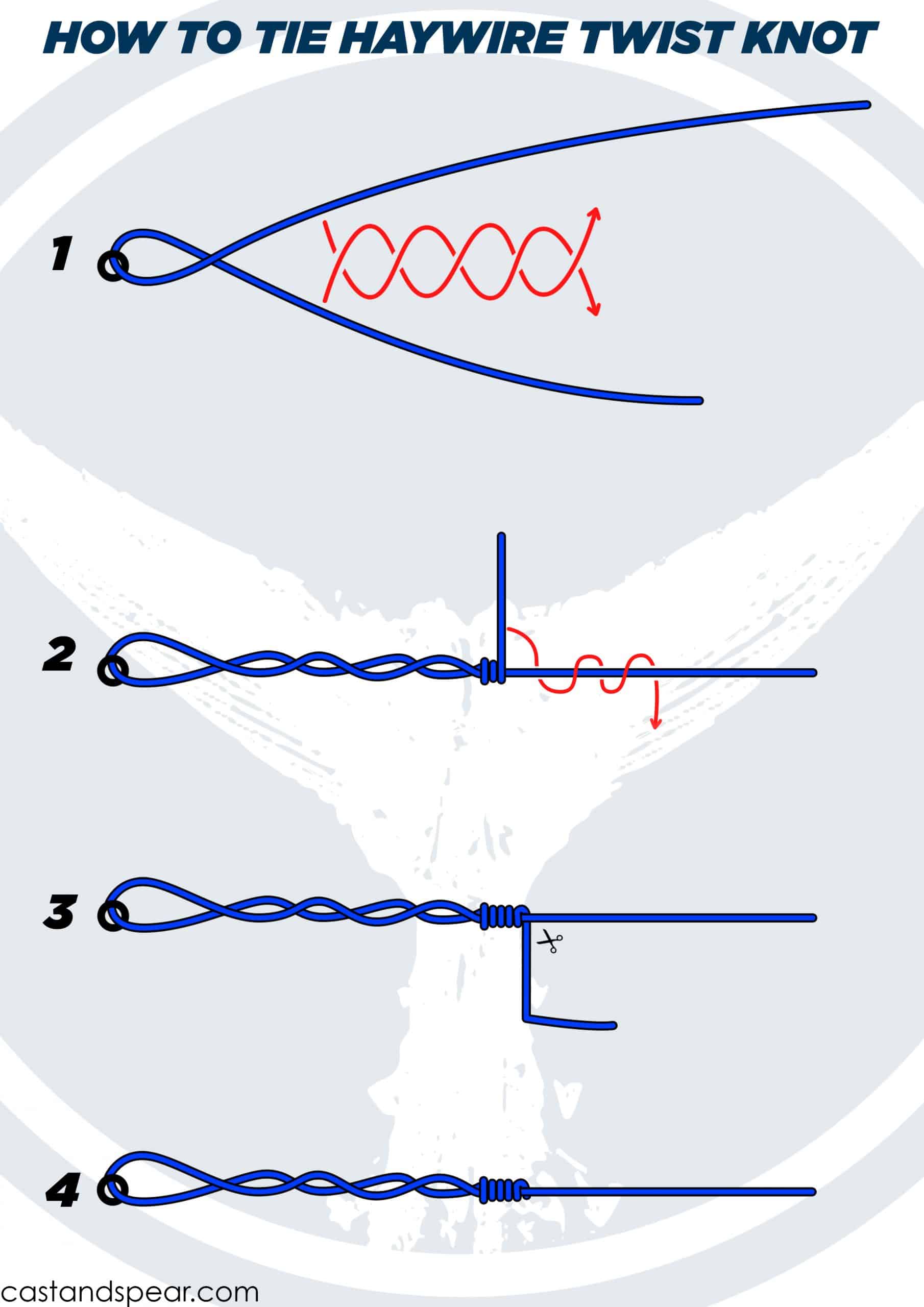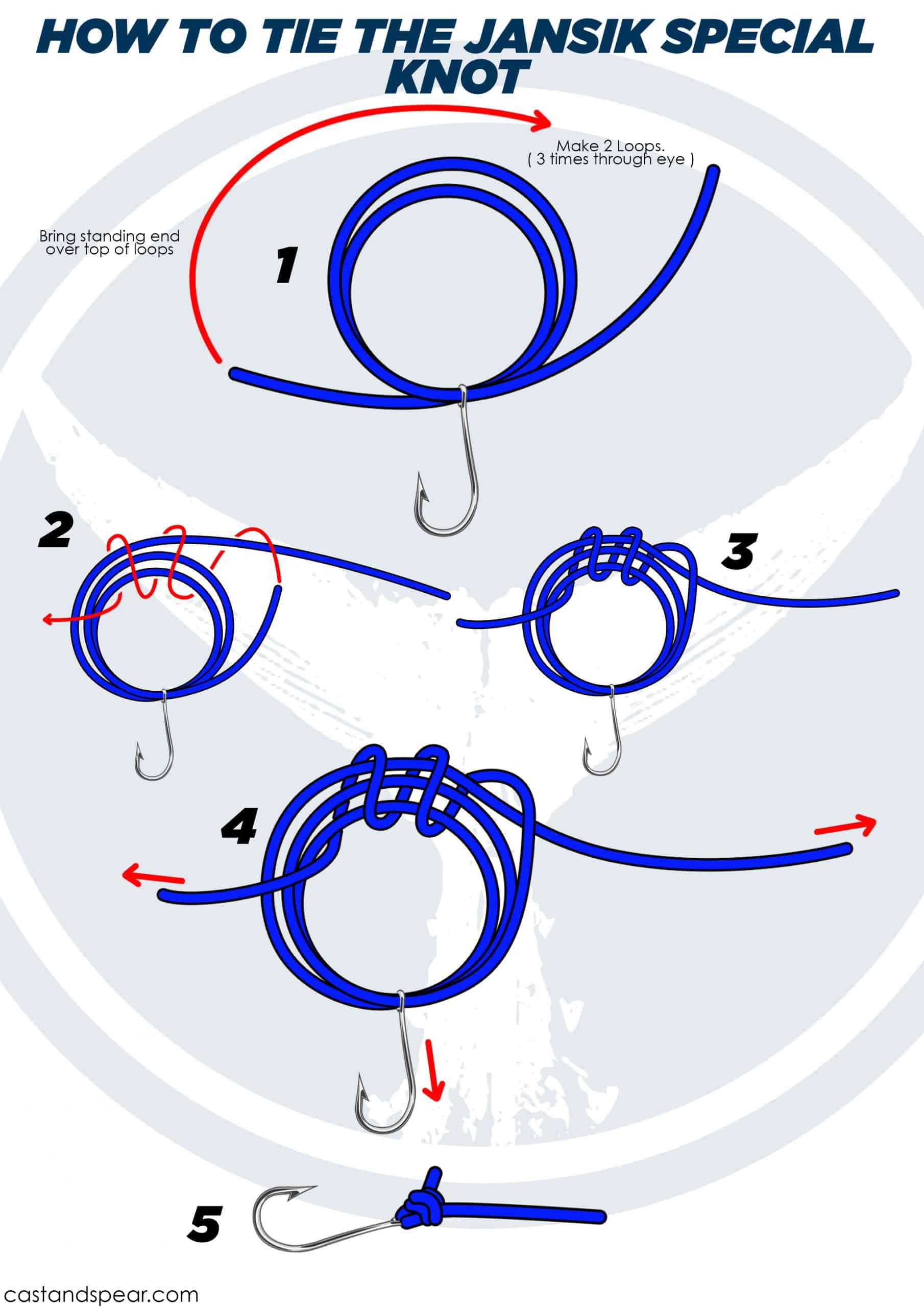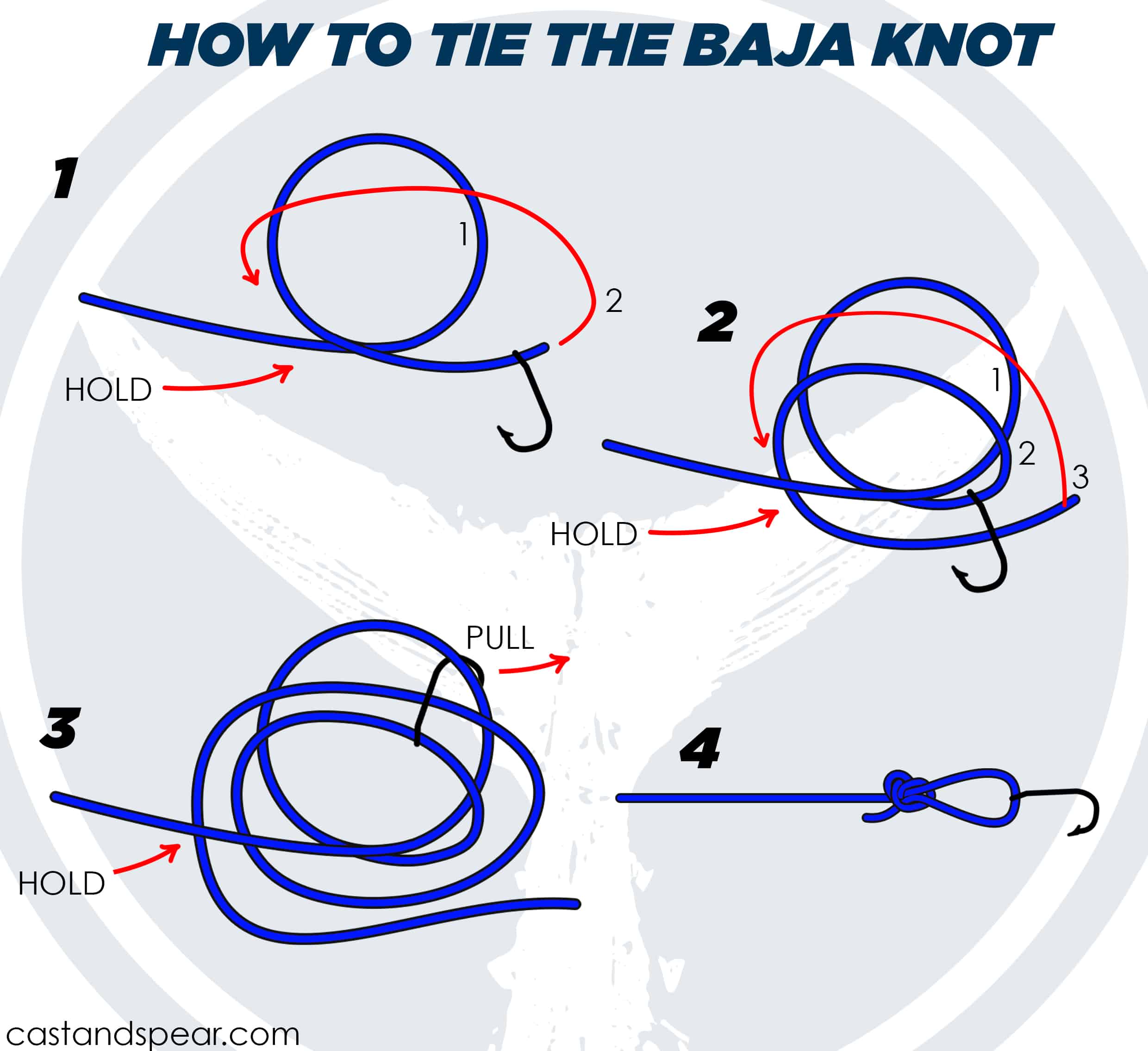Are you seeking a reliable knot for your fishing adventures? Understanding how to tie the J-Knot is crucial for any angler, especially when tying a tippet to a leader in fly fishing. In this article, we will delve into the world of the J-Knot, a knot renowned for its strength and reliability.
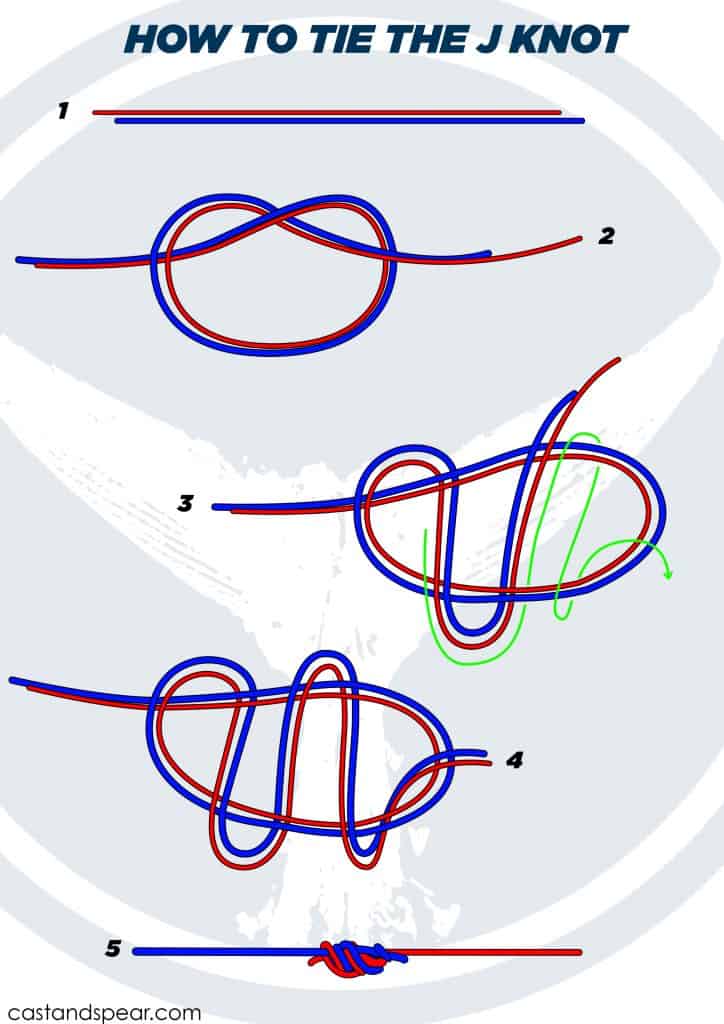
The J-Knot, often used for tying a tippet to a leader in fly fishing, is a knot that deserves your attention.
If the Surgeon’s Knot and the Davy Knot had a baby, it would be the J Knot. Some claim that this connection is close to 100% when appropriately tied and can even beat the triple Surgeon’s Loop since it puts less stress on the material, especially the lighter-diameter lines.
Whether you’re a seasoned angler or a beginner, mastering the J-Knot could be a game-changer for your fishing adventures. Let’s learn how to tie this great braid to mono or fluorocarbon fishing knots.
Tying the J Knot
- Start by forming a loop with the two lines in parallel to each other and pinching where they overlap.
- Bring your two lines through the loop as if you’re making an overhand knot.
- Now you’re going to do your first weave by bringing the two lines around the outer edge of the loop and back through the opening.
- Now make the same motion on the top side of the loop and bring the two lines through the loop.
- Do this action one more time at the bottom and bring your lines back through the center.
- Slowly start to cinch down the connection and moisten.
- When it’s lubricated, pull all strands of the line tight and secure the connection in place.
- You’ve now completed the J Bend Knot!

Why Choose the J-Knot?

Ever found yourself in a dilemma about which fishing knot to use? Choosing the right knot is a critical decision that can make or break your fishing experience. The J-Knot stands out among its peers like the Surgeon’s Knot, Blood Knot, and the Double Uni Knot for several reasons.
- Strength: The J-Knot is known for its exceptional strength. It’s not just hearsay; this claim is backed by rigorous tests performed by reputable sources such as Field & Stream. These tests have consistently shown that the J-Knot can withstand significant tension, often outperforming other popular knots.
- Implication for Anglers: Simply put, a stronger knot means less chance of your line breaking and losing that big catch!
Uses of the J-Knot
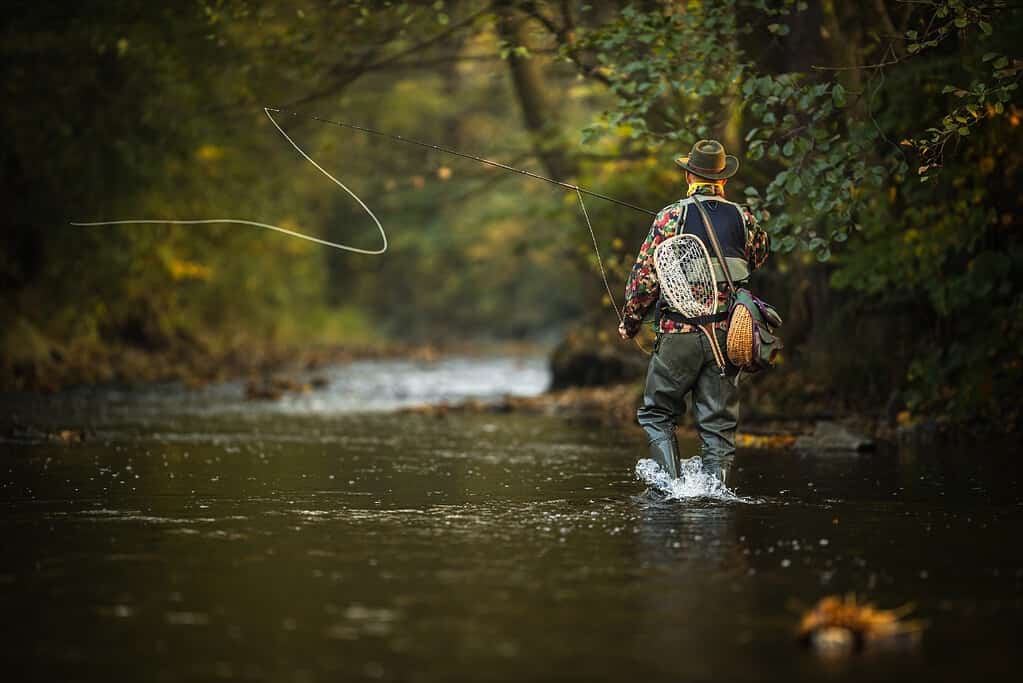
The J-Knot isn’t just strong; it’s also versatile. Its primary use is in fly fishing, where it’s often employed to tie a tippet to a leader line. This application is particularly important as it allows for a secure and reliable connection, ensuring your line stays intact even under pressure.
However, it’s worth noting that the J-Knot might not be the best choice for every situation. For instance, it’s not typically recommended for braid to mono connections. But don’t let that deter you! With its strength and reliability, the J-Knot still has plenty to offer in the right circumstances.
Advantages and Disadvantages of the J-Knot
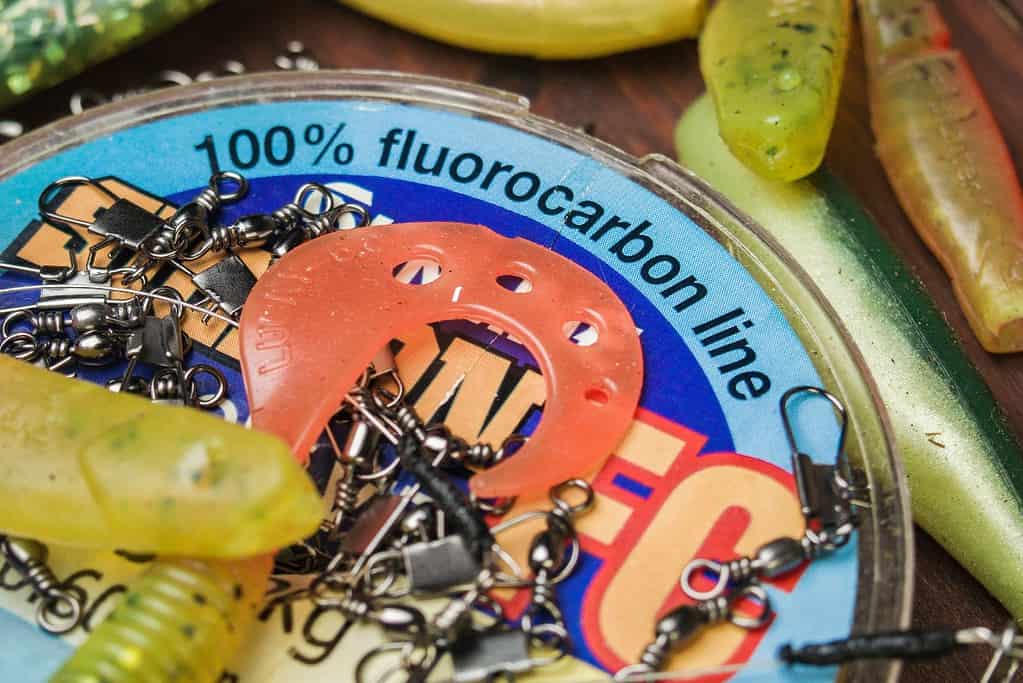
Like anything else, the J-Knot has its pros and cons.
- Advantages: On the plus side, it’s simple to tie and incredibly strong, making it a reliable choice for many fishing scenarios. It’s especially effective with lighter leader lines, where it reduces stress on the material and ensures a secure connection. These fishing knots shine when you have a lighter leader line that you need to tie together. It’s probably best to use mono and fluorocarbon rather than braid.
- Disadvantages: On the flip side, the J-Knot may not be the best choice for all line types. For example, it might not hold as well with braid lines due to fewer cinch points, which could lead to slippage.
Alternatives to the J-Knot
While the J-Knot is a fantastic choice, it’s not the only knot in an angler’s toolbox. There are several alternative knots that you might consider, each with its own strengths and weaknesses.
Surgeon’s Knot
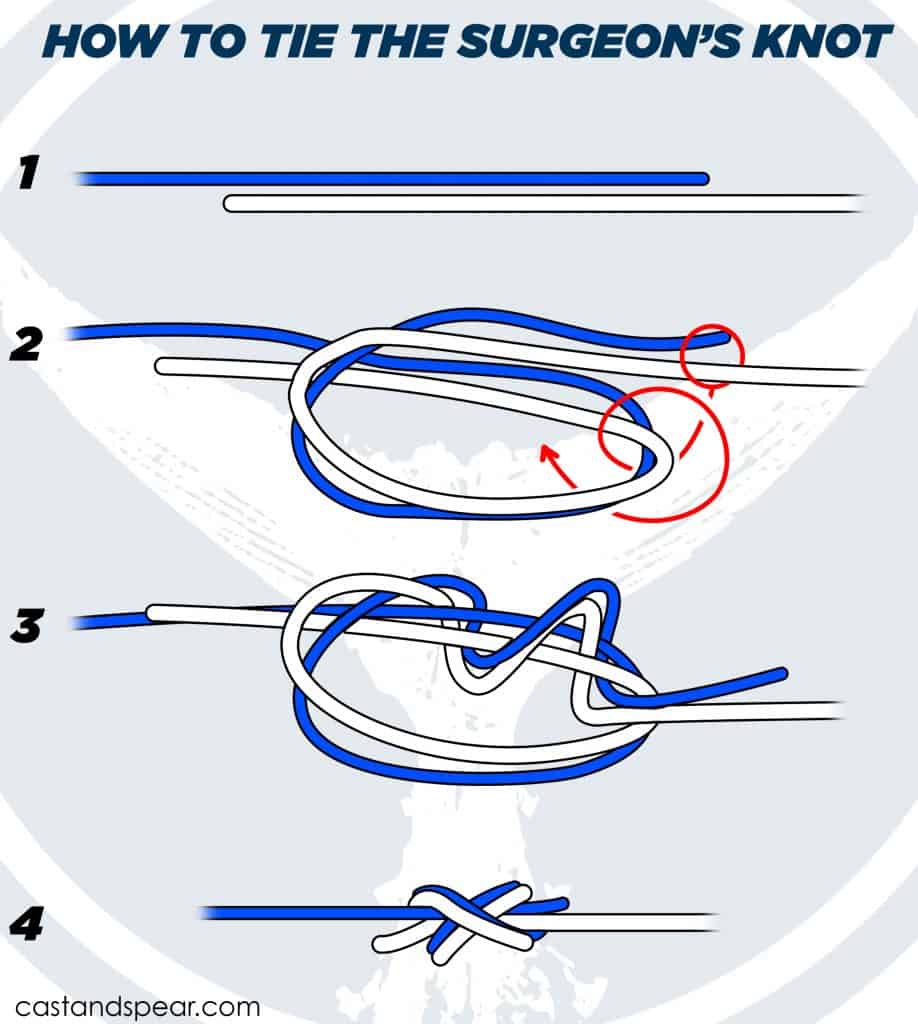
J-Knot vs. Surgeon’s Knot: The Surgeon’s Knot is known for its simplicity and strength. It’s easy to tie, even in low-light conditions, making it a favorite among many anglers. However, the J-Knot often outperforms the Surgeon’s Knot in terms of strength, especially when used with lighter leader lines. The J-Knot also tends to create a smaller, more streamlined knot, which can be beneficial when casting and reeling in.
Slim Beauty
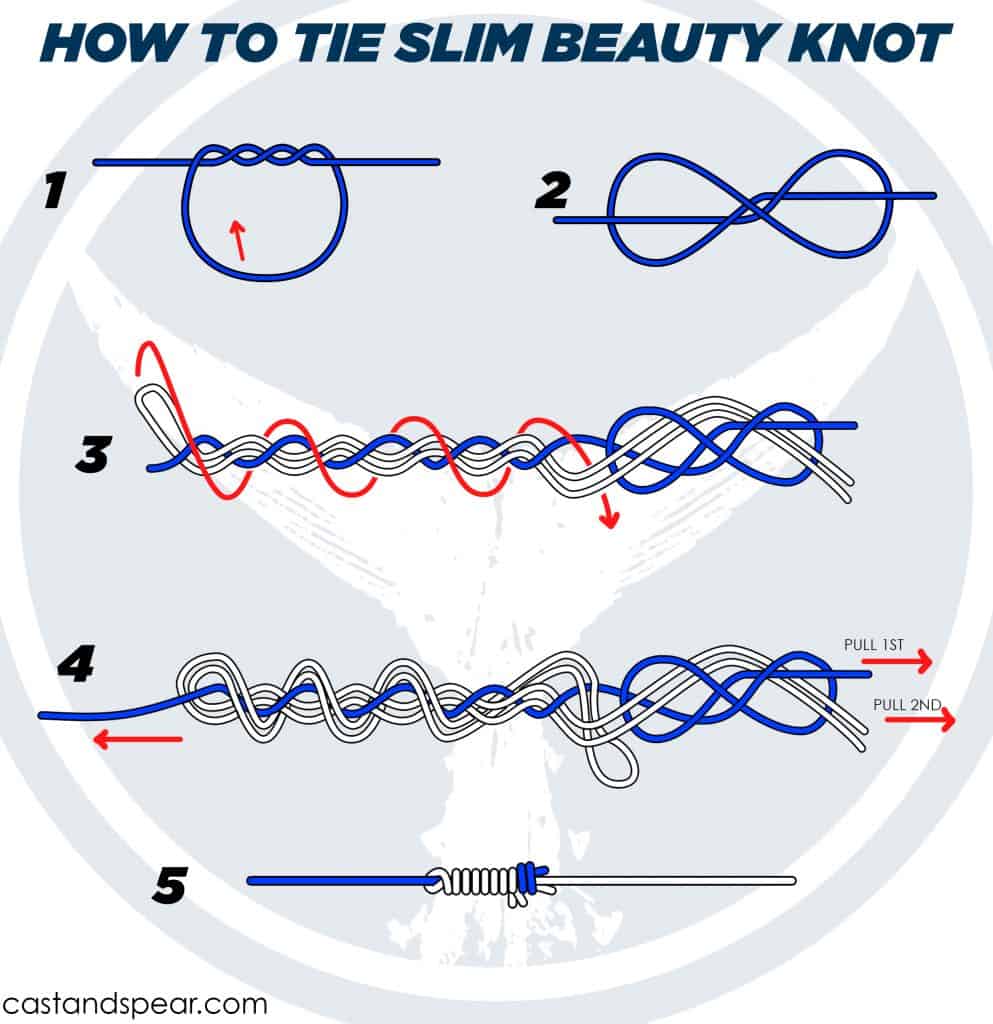
J-Knot vs. Slim Beauty: The Slim Beauty is known for its sleek profile and strong hold, especially in saltwater environments. It’s a great choice for tying together lines of different diameters, including mono to braid connections. However, the Slim Beauty can be more complex to tie than the J-Knot. In terms of strength, both knots perform well, although the J-Knot may offer a bit more security with lighter lines.
Double Uni Knot
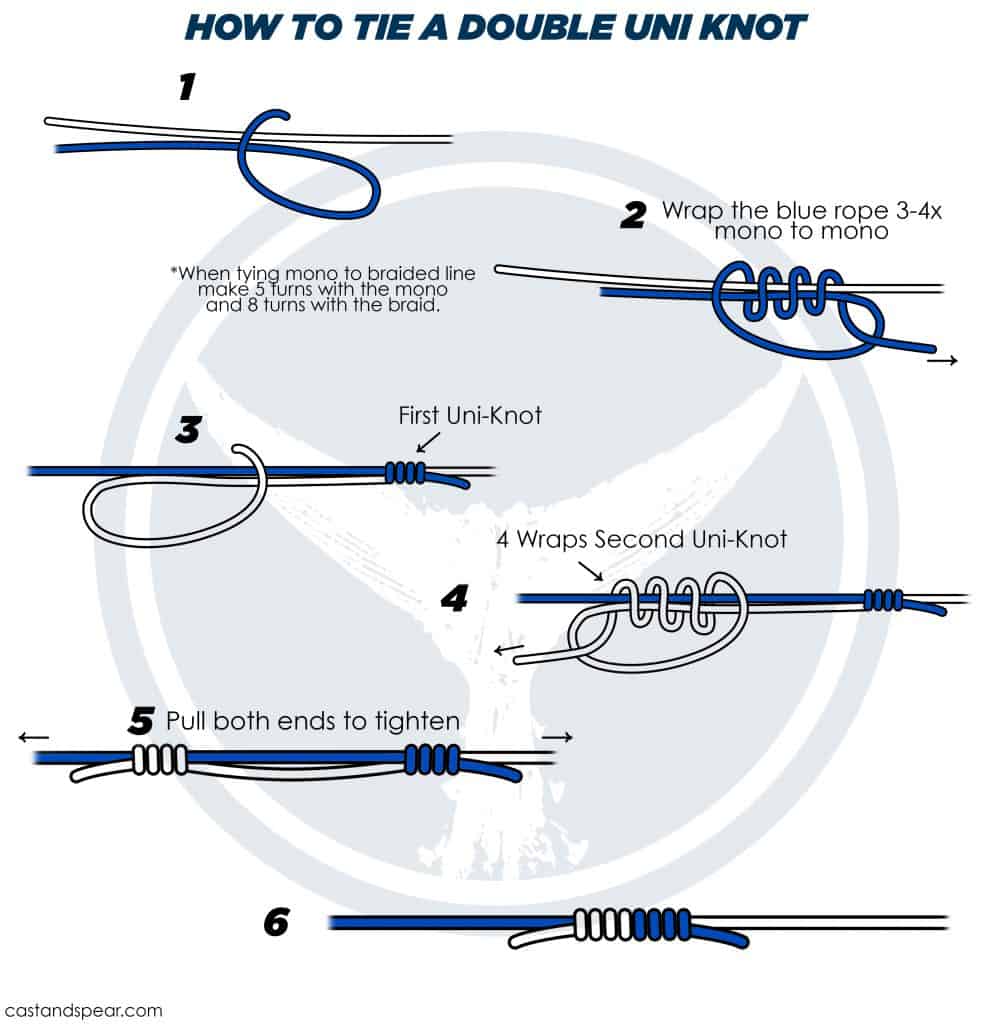
J-Knot vs. Double Uni Knot: The Double Uni Knot is a versatile knot that can be used with different types of line, including mono to braid connections. This gives it a versatility that the J-Knot lacks. However, the J-Knot often surpasses the Double Uni Knot in terms of pure strength, especially when used with mono or fluorocarbon lines.
Frequently Asked Questions
For a stopper knot, take your line and wrap it around your index and middle fingers three to six times, then put the tag end through the loops you just created. Then pull the mainline and tag tight to form your stopper fishing knot.
The most reliable fishing knot is one that’s appropriately tied and can withstand both gradual tension and shock tension. Many feel the FG is the strongest for line-to-line and the Palomar for attaching hooks and lures.
Start like you are tying a Surgeon’s, then weave your line three times, pull tight, then moisten.
FG Knot is the best for tying the main line to a leader together. However, the RP Knot is nearly as good and is easier to tie.
Yes, the J-Knot is known for its superior strength. Tests performed by Field and Stream has shown that the J-Knot can withstand significant tension, often outperforming other popular knots like the Surgeon’s Knot, Blood Knot, and the Double Uni Knot.
The J-Knot is particularly effective with lighter leader lines, where it reduces stress on the material and ensures a secure connection. However, it might not hold as well with braid lines due to fewer cinch points, which could lead to slippage.
To tie the J-Knot, start by laying the main line and leader on top of one another, overlapping by several inches. Form a loop with the doubled line by tying a simple overhand knot, pulling the entire leader through the loop. Run the end of the line and the entire leader through the loop from the backside, repeating this process twice from the top and twice from the bottom. Finally, moisten the lines and pull tight to secure the knot.
The Verdict
The J-Knot is a powerhouse in the world of fishing, boasting strength and reliability that every angler should take advantage of. Its versatility makes it a valuable asset in a variety of fishing scenarios.
But don’t just take our word for it. Get out there and give the J-Knot a try. Practice makes perfect, and with a little time and patience, you’ll be tying this knot like a pro.




 Facebook
Facebook YouTube
YouTube